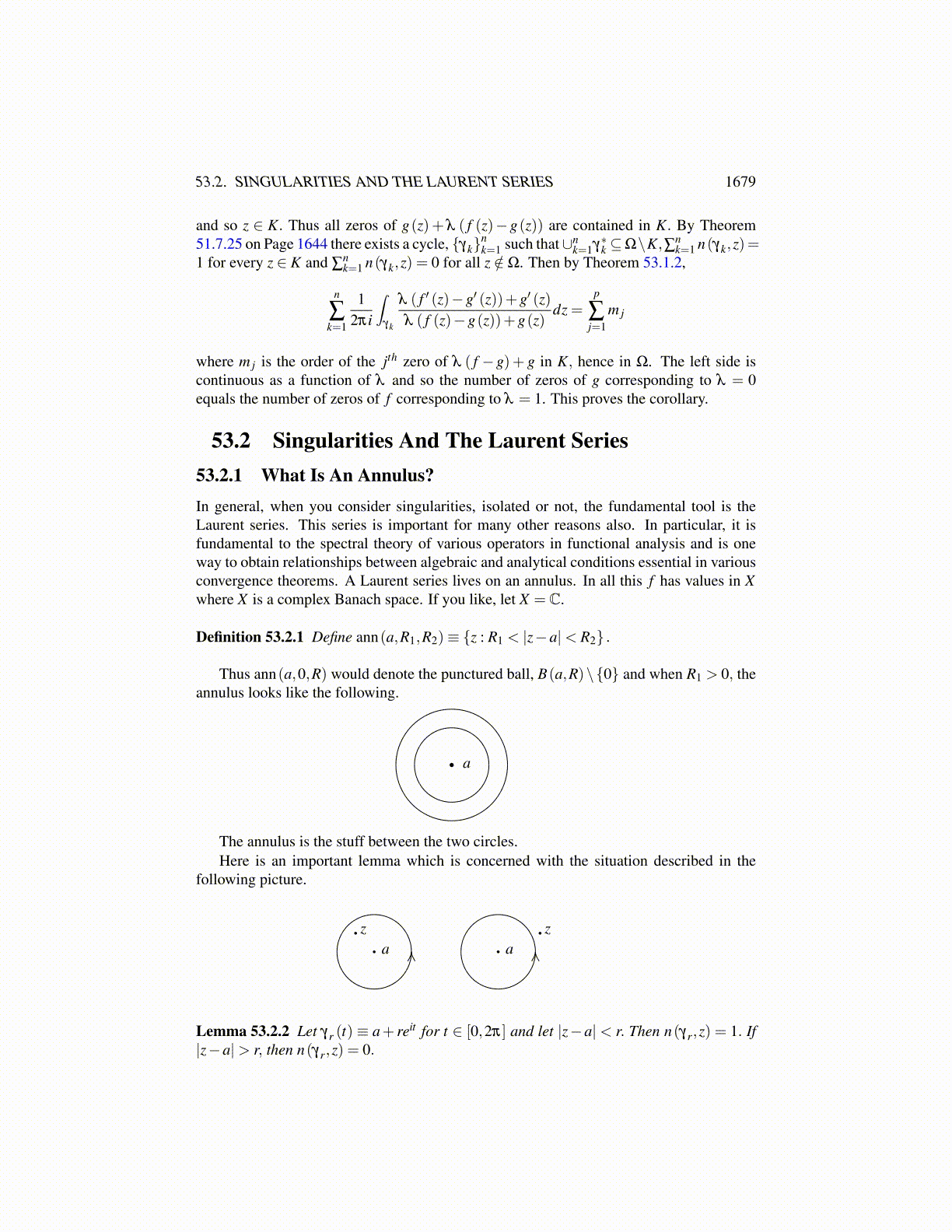
53.1. ROUCHE’S THEOREM AND THE ARGUMENT PRINCIPLE 1679
number of zeros of f counted according to the order of the zero with a similar definitionholding for Pf . Thus the conclusion of the argument principle is.
12πi
∫γ
f ′ (z)f (z)
dz = Z f −Pf
Rouche’s theorem allows the comparison of Zh−Ph for h = f ,g. It is a wonderful andamazing result.
Theorem 53.1.4 (Rouche’s theorem)Let f ,g be meromorphic in an open set Ω. Also sup-pose γ∗ is a closed bounded variation curve with the property that for all z /∈Ω,n(γ,z) = 0,no zeros or poles are on γ∗, and for all z ∈ Ω,n(γ,z) either equals 0 or 1. Let Z f and Pfdenote respectively the numbers of zeros and poles of f , which have the property that thewinding number equals 1, counted according to order, with Zg and Pg being defined simi-larly. Also suppose that for z ∈ γ∗
| f (z)+g(z)|< | f (z)|+ |g(z)| . (53.1.4)
ThenZ f −Pf = Zg−Pg.
Proof: From the hypotheses,∣∣∣∣1+ f (z)g(z)
∣∣∣∣< 1+∣∣∣∣ f (z)g(z)
∣∣∣∣which shows that for all z ∈ γ∗,
f (z)g(z)
∈ C\ [0,∞).
Letting l denote a branch of the logarithm defined on C\ [0,∞), it follows that l(
f (z)g(z)
)is a
primitive for the function,( f/g)′
( f/g)=
f ′
f− g′
g.
Therefore, by the argument principle,
0 =1
2πi
∫γ
( f/g)′
( f/g)dz =
12πi
∫γ
(f ′
f− g′
g
)dz
= Z f −Pf − (Zg−Pg) .
This proves the theorem.Often another condition other than 53.1.4 is used.
Corollary 53.1.5 In the situation of Theorem 53.1.4 change 53.1.4 to the condition,
| f (z)−g(z)|< | f (z)|
for z ∈ γ∗. Then the conclusion is the same.
Proof: The new condition implies∣∣∣1− g
f (z)∣∣∣< ∣∣∣ g(z)
f (z)
∣∣∣ on γ∗. Therefore, g(z)f (z) /∈ (−∞,0]
and so you can do the same argument with a branch of the logarithm.